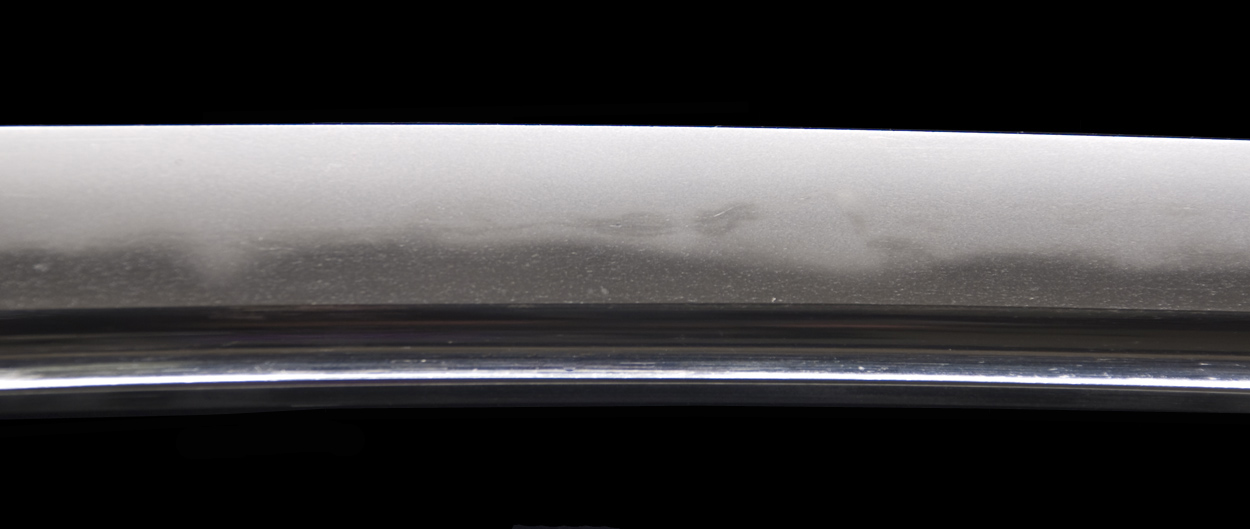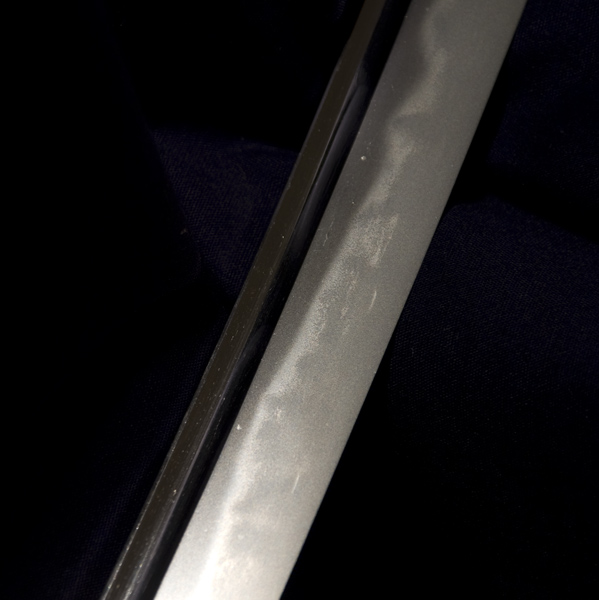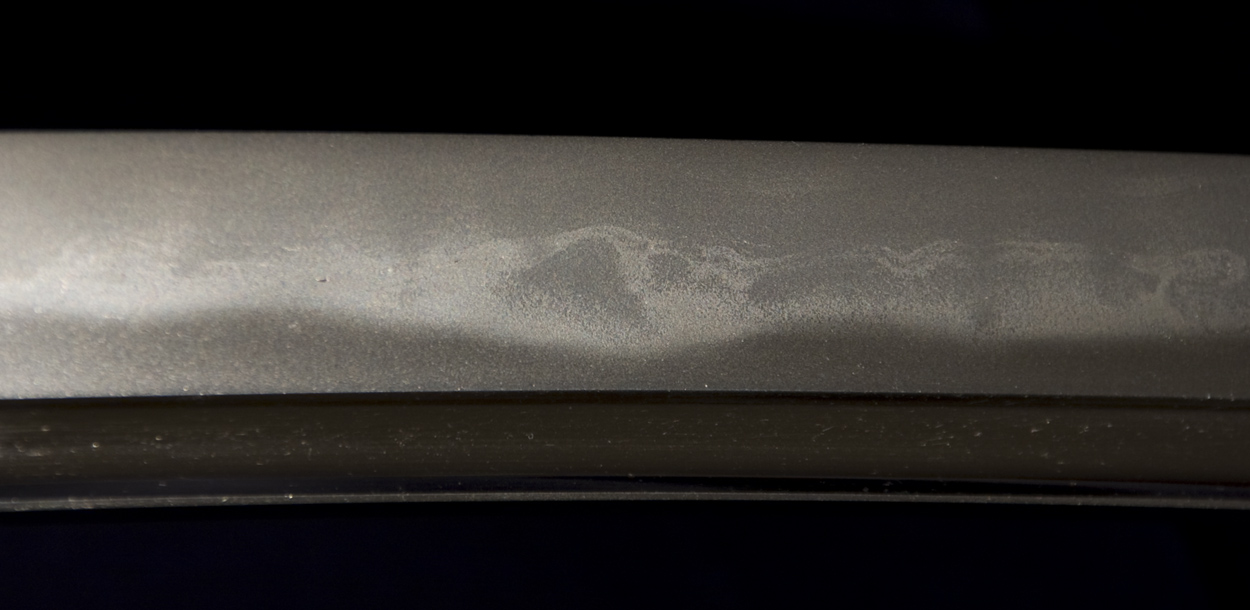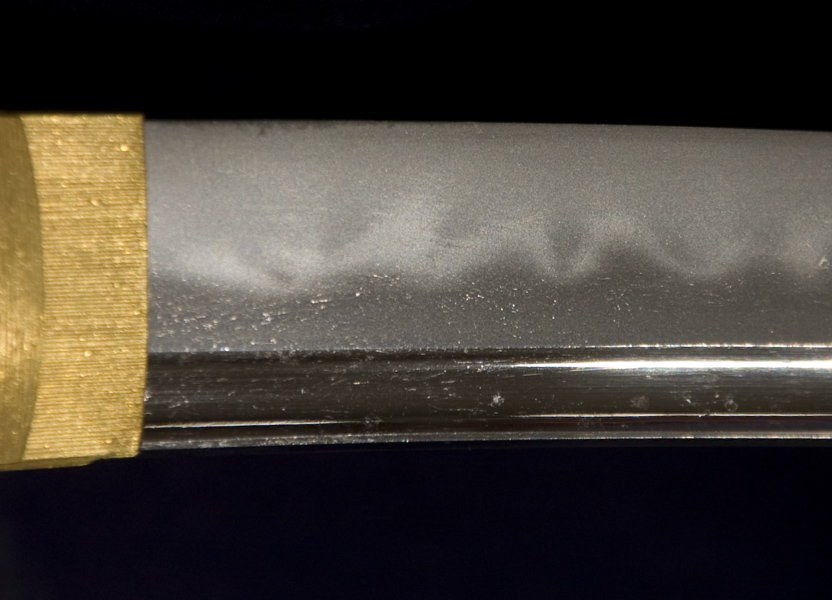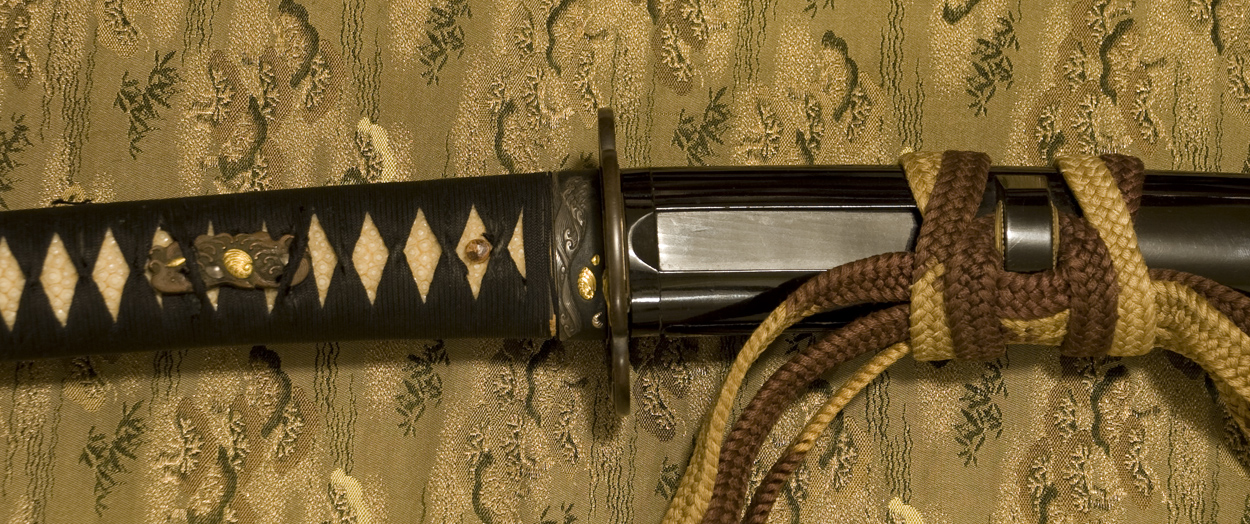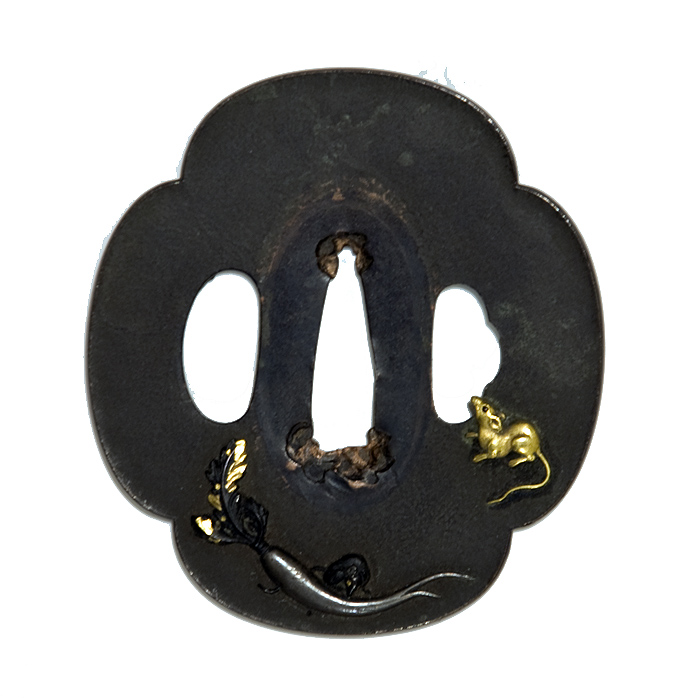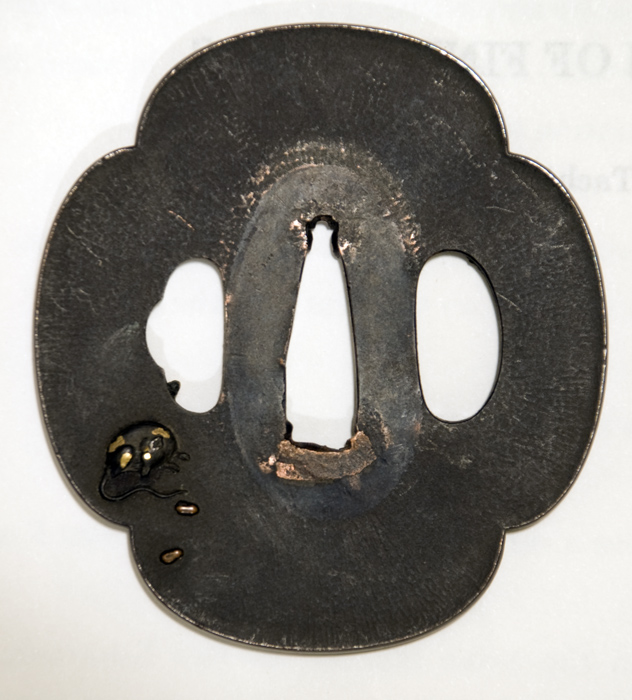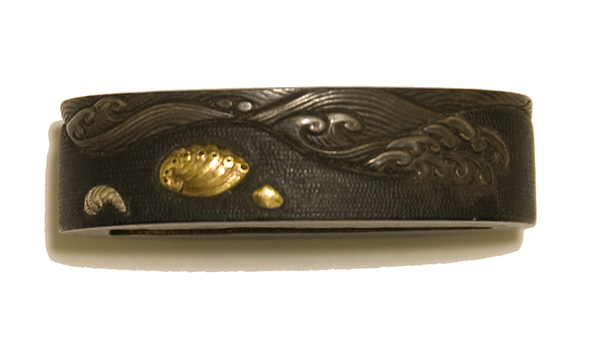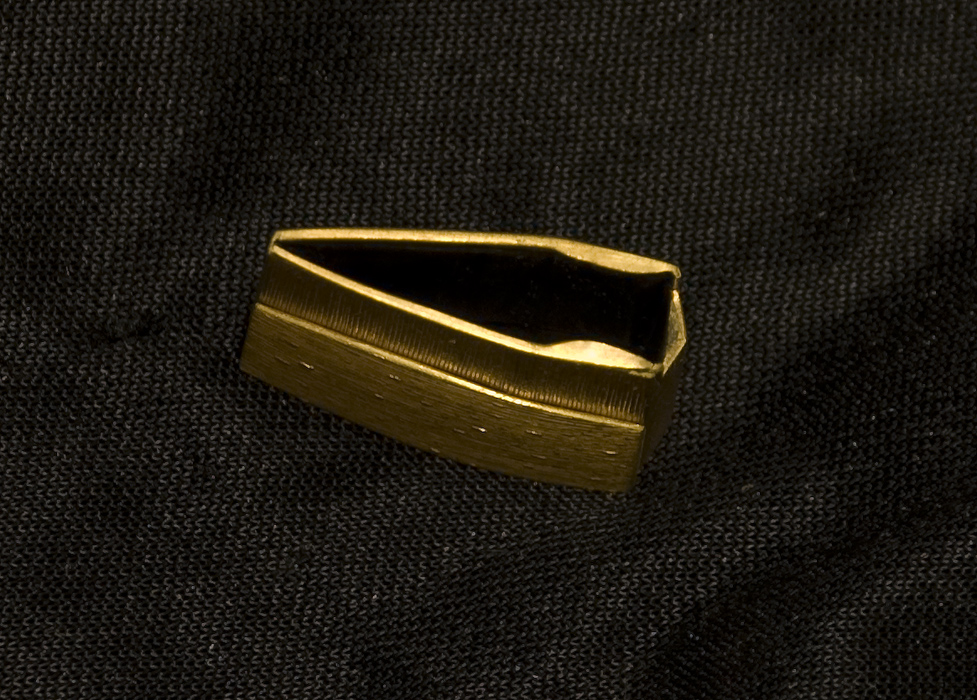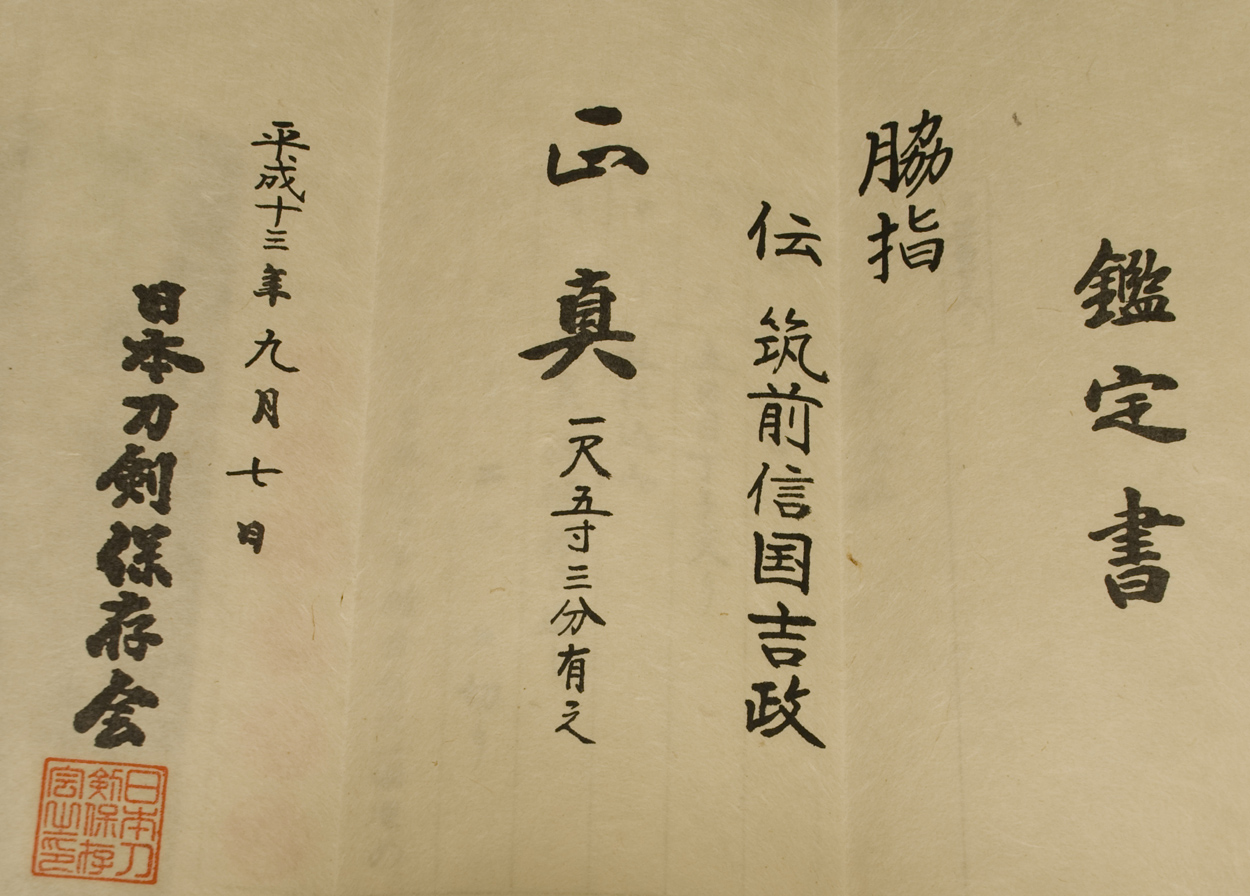|
| |||||||||||||||||||||||||||||||||||||||||||||||||
Hamon : Wide ko-nie deki choji gunome midare on a bed of nioi. Thick ashi, sunagashi, inazuma and kinsuji are abundant. Areas of tobiyaki are also present.
Boshi : Midare-komi with nie hataraki and a short return.
Kitae : Ko-mokume with ji-nie and chikei
About this sword : This is a nice wakizashi with an Edo period koshirae that has been attributed by the NTHK NPO to the second generation Chikuzen Nobukuni Yoshimasa. He was commonly called Heishiro. He died at the age of 67 in 1688. This blade is well made and it has a strong koto flavor about it. There is a lot of activity in the blade and the horimono of bo hi on each side really gives the blade a classy appearance. The second generation Yoshimasa is ranked Jo Saku by Fujishiro, 3.5 million yen in the Tokotaikan and 60 points by Hawley. The quality of this blade reflects those high rankings very well.
The blade has a fine Edo period koshirae. The saya is black urushi in excellent original condition. It is in the formal style with a horn kojiri, horn koiguchi and pockets for kozuka and kogai. The tsuba is moku-gata shakudo with an ishime ji. There are finely detailed gold and shakudo mice with a shibuichi radish. The radish has gold and shakudo leaves. The fuchi is made of dark colored shakudo nanako on the bottom with lighter gray colored shakudo waves on the top. The kashira is horn, meeting Edo period regulation but finished with urushi shells to match the kashira and menuki. The menuki are copper waves with silver and gold sea shells. The antique black ito is in wonderful condition and the same is high quality. A gold and brown sageo completes the koshirae.
The blade is in a Japanese made tiger striped shira-saya with a fine two piece gold foil habaki. The koshirae has a tsunagi and there are two storage bags.
This is a great opportunity to own a Jo Saku papered polished blade with a very nice Edo period koshirae. Fully restored and ready to be enjoyed for a lifetime.



